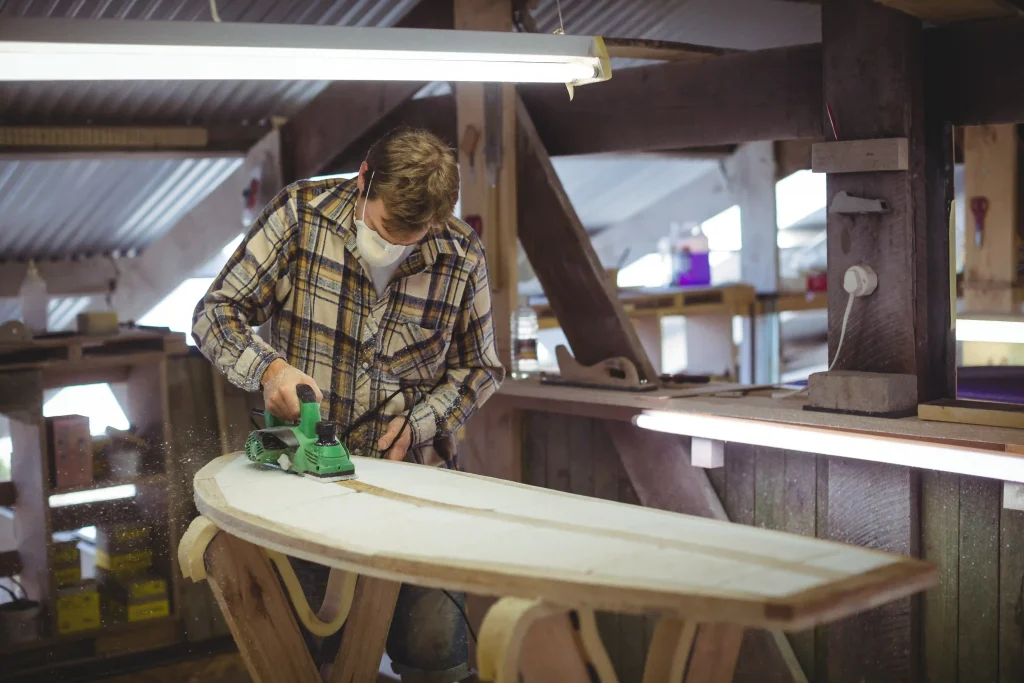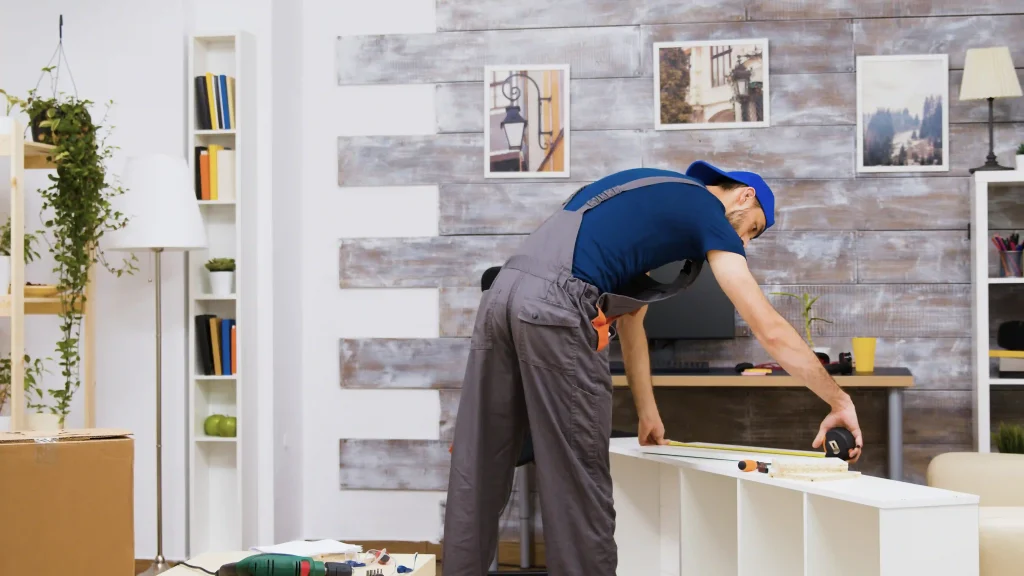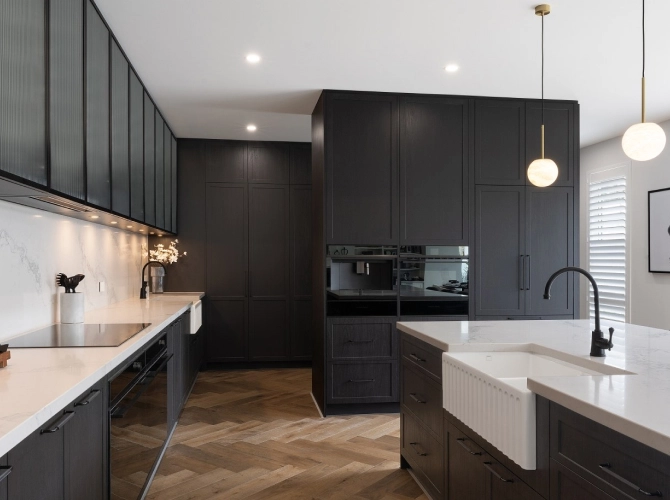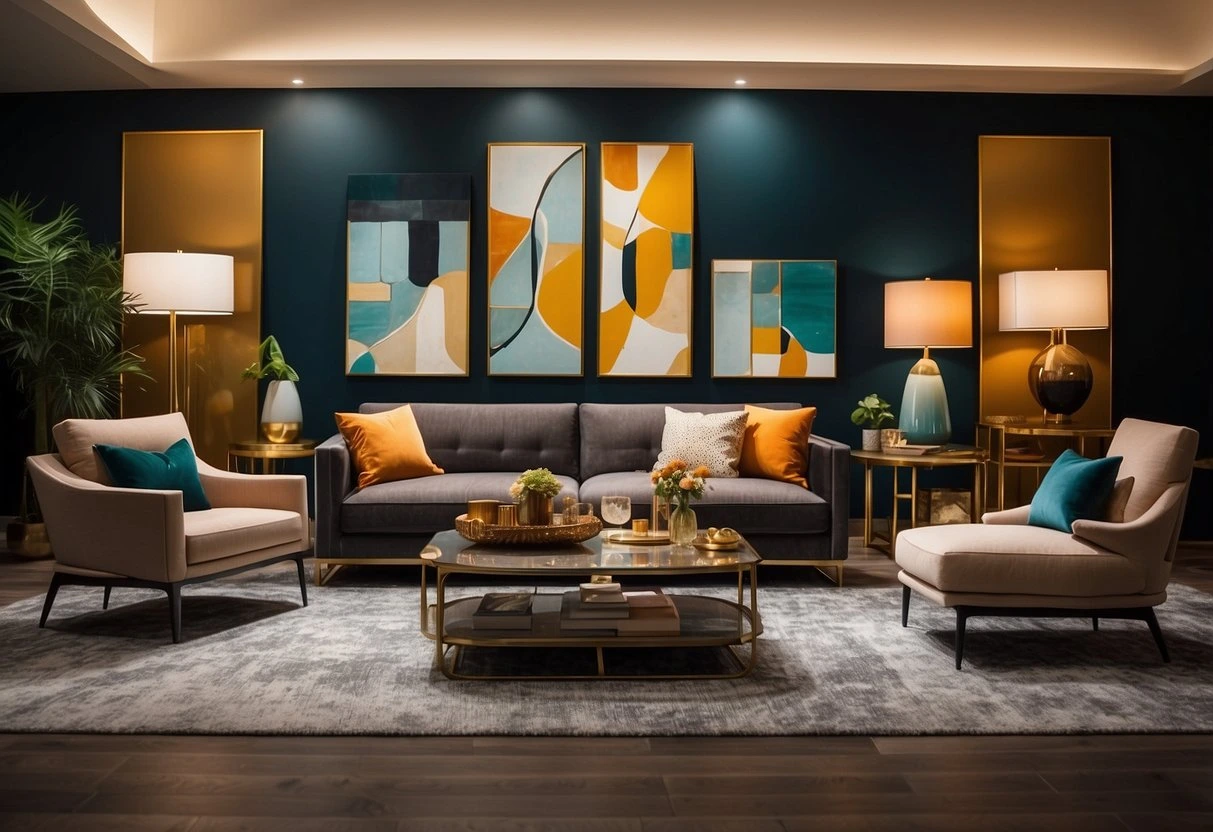Ever looked around your home and thought, “This place could use a glow-up,” then got sticker shock at the quote? You’re not alone. Residential renovation in Sydney can be exciting – but it sure can also be expensive. In a city where property prices often feel like they have their own gravity, even small renos can stretch your budget.
One underrated yet impactful trick? Furniture restoration. Instead of tossing out tired pieces, reviving them can save thousands and add a unique, personal touch to your interiors.
Here we’ll break down the essentials of smart, stylish renovating without breaking the bank. We’ll cover budgeting, where to splurge (and where to save), how to hire tradies wisely, and even how to add a dash of eco-friendly flair. By the end, you’ll be itching to roll up your sleeves – or at least make some savvy decisions – to transform that tired old space into your dream home.
Why Everyone’s Talking About Residential Renovation in Sydney
Imagine binge-watching a home makeover show while your own kitchen aches for an update. “One day,” you mutter, “I’ll call a builder – if only my wallet cooperated.” Sound familiar? Sydney folks from Bondi to Parramatta often dream of revamping their homes, but then reality bites: tradies’ quotes, council fees, and endless material choices. The good news? With smart planning and a bit of creativity, you can pull off a gorgeous home upgrade on a sensible budget. In this post, I’ll walk you through proven hacks and insights for Residential Renovation Sydney projects – from crunching numbers to picking paint – so you actually enjoy the process (and the result) without financial heartache. No jargon here, just practical, Aussie-style advice sprinkled with some wit (and maybe an anecdote or two).

Know Your Numbers: Setting a Realistic Renovation Budget
First things first: face the facts. Renovations have a funny way of creeping costs up if you don’t nail the budget in advance. Think of your budget like a recipe – too much of one expensive ingredient (like designer tiles) can ruin the dish. Start by listing all the jobs you want done: new kitchen? bathroom refresh? a fresh coat of paint? Then assign rough costs. Industry surveys give a useful ballpark. For example, a 2024 BudgetDirect survey finds a Sydney kitchen reno typically ranges $10,000–$45,000, while a bathroom runs around $10,000–$35,000 and a living room about $10,000–$15,000. (These are averages – your particular space size and finishes will sway the numbers.)
As a rule of thumb, experts warn don’t spend more than 10% of your home’s value on renovations. Got a $800K house? Keep the reno below ~$80K. Also, always tack on a 10–20% contingency. Because, trust me, there will be a “Yeah about that….” moment. I once heard a story of a Parramatta couple who budgeted $50K for a bathroom and kitchen facelift – only to hit $65K in the end. Why? Hidden issues like ageing plumbing and unexpected council fees popped up. They said, “Lesson learned: Murphy’s Law loves renovations.”
Budgets at a Glance
| Renovation Area | Average Sydney Cost |
|---|---|
| Kitchen | ~$10,000–$45,000 |
| Bathroom | ~$10,000–$35,000 |
| Living Room | ~$10,000–$15,000 |
| Full House (cosmetic) | ~$50,000–$120,000 (varies) |
Table: Typical renovation cost ranges in Sydney (estimates from industry surveys). Always plan for the higher end of the range!
By breaking out costs like this, you’ll spot where the money goes. For instance, kitchens are pricier (appliances, cabinets, benches), while simple touch-ups (like painting or new lights) are cheaper. Write everything down, get a few quotes, and let that 10% rule keep your ego in check. Short story: a solid budget gets you halfway to a successful reno before a tool even hits the wall.
Where to Spend, Where to Save: Smart Choices That Pay Off
Now you know your budget, time to play “splurge vs save” wisely. Generally, focus your dollars on high-impact areas. Real estate pros (and renovators) say the best bang-for-buck rooms are the kitchen, bathroom, and curb appeal. A sparkling new kitchen or a sleek bathroom can give your home a major style boost – and even pay off when you sell. For example, adding quality fixtures or stone benchtops in the kitchen is often worth it, whereas swapping out the sofas or curtains later won’t move the value needle much.
A table might help simplify this:
Splurge vs Save: Room-by-Room
| Room | Where to Splurge | Where to Save |
|---|---|---|
| Kitchen | Solid cabinetry, durable benches, plumbing | Hardware & knobs (IKEA has good finds), paint |
| Bathroom | Quality tapware, good tiles (wet areas) | Vanity decor, secondary fixtures |
| Living Room | Big-ticket furniture (sofa quality) | Paint colors, affordable rugs/accessories |
| Bedrooms/Study | Built-in storage, comfortable flooring | Décor, DIY shelving |
| Exterior/Curb | Door/roof/landscape upgrade (ROI) | Lawn/fence paint, DIY plantings |
So for example: spend on a good kitchen layout and plumbing, save by hunting Facebook Marketplace for a nearly-new oven or picking a standard door style instead of custom. The hipages renovators even suggest bundling jobs to save call-out fees. That means, if your fencing, deck, and minor plumbing could all be done in one go, do them together – you’ll pay one trip charge instead of three separate ones. Little tricks like that add up.
High-ROI tip: don’t underspend on structure or style-defining elements. Do splash out on timeless finishes (think classic subway tile instead of $300 designer wallpaper that might date). But be thrifty on one-off decor. Visit thrift stores or IKEA hacks, and DIY where it makes sense. I once turned an old dresser into a bathroom vanity by simply sanding and repainting it – cost me $50 instead of $500. Simple bold choices (a bright wall, a statement light fixture) can feel fresh at minimal cost. The key is smart sourcing: hunt local spots (Facebook Marketplace, local factory seconds outlets) and consider upcycling.
Expert insight: According to renovation analysts, curb appeal (like a neat front garden, new entry door or paint job) often gives one of the highest returns. So even if you skip something expensive inside, a fresh facade can make your whole project look finished.
Planning Like a Pro: Tools & Permits for Residential Renovation Sydney
You might not be an architect, but you can plan like one. Before swinging the hammer, make a game plan. Draw out basic layouts, set timelines, and gather inspiration. Free online tools can help: try SketchUp (it’s free and lets you model rooms in 3D!), or simply create a Pinterest board of ideas. Lay it all out on paper first so you know what fits and where – this avoids nasty surprises mid-build.
Crucially, in Sydney you may need permits. Under NSW rules, any structural work or renovations over ~$5K need a formal building approval. Think moving walls, adding windows, or altering load-bearing beams – that’s not DIY territory. You’ll need either council Development Approval (DA) or a Complying Development Certificate (CDC). Even some internal work (like major kitchen or bathroom gut jobs) might need a permit. No one wants fines or to demolish an illegal change, so check the NSW Government’s planning portal for permit requirements or hire a registered certifier early. (Quick tip: some small updates like painting or planting a garden can skip council approval, but always double-check.)
In short: plan thoroughly and stay legal. Graph paper and imagination can only take you so far – do your homework on regulations. Many tradies also recommend putting together a detailed schedule before starting – even a bullet-point checklist of tasks. Sketch out a week-by-week plan (“Week 1: demo and rough-ins; Week 2: plumbing & electrical; Week 3: walls/painting; etc.”). This not only keeps builders on track but gives you ammo in negotiations.
Finally, even if you’re not hiring an interior designer, consider a home renovation planner (some local community centers or online services offer budget sessions). They can flag hidden costs or solutions you may have missed. Remember: good planning means you know exactly what you want before ordering that custom marble bench or saying “Go!” on the drywall. This cuts down change orders (and unexpected bills) later. Residential Renovation Sydney is all about balancing vision with reality, and a little foresight goes a long way.
How to Choose the Right Tradies Without Breaking the Bank
Alright, your plan is in place – now you need people to do the work. In Sydney, tradie rates are high, so you want value for your dollar. Here’s how to hire smart: always get at least three written quotes for each trade. Use platforms like hipages or ServiceSeeking to find local tradespeople and compare reviews. Check licences and insurance – a cheap unlicensed sparkie is a recipe for disaster (and a fine). You can read more about hiring licensed tradies via NSW Fair Trading to understand your rights, contracts, and what qualifications to look for before signing anyone on.
A pro tip: bundle tasks under one tradie whenever possible. For example, a licensed builder can often manage several trades (carpentry, tiling, even simple electrical) under one contract. Some customers saved thousands by having an all-in-one builder instead of separate crews. Plus, hipages points out that bundling jobs saves on travel fees – since many handymen and tradies have a minimum call-out (often 2 hours), combining tasks avoids paying for idle time.
Quick vet checklist: Does the builder/tradie have NSW licencing (especially for structural, electrical, plumbing)? Are their quotes clear (itemized by materials and labor)? Do they provide a written contract outlining costs and deadlines? (Even a simple fixed-price contract beats a handshake any day.) Don’t be shy about negotiating – sometimes letting them know you’re comparing quotes will land you a small discount or free upgrade.
Remember: cheapest isn’t always best. But paying more doesn’t guarantee perfection either. Look for the sweet spot: reasonable rate, good communication, and a proven track record. I once hired a Jack-of-all-trades guy in the Inner West who quoted $200/hr. Seemed steep, but he finished two weeks early and found cheaper materials for me, ultimately saving $4K versus the cheapest quote. When it comes to hiring, trust your gut and do your homework. Also, build in time. Top Sydney trades get booked out (especially in spring/summer), so line them up early. Waiting a month or two can be worth it for the right fit – fixing botched work costs far more than a bit of patience.
Sustainable and Budget-Friendly? Yes, It’s Possible
“Eco-friendly” and “budget renovation” often sound at odds, but they needn’t be. In fact, choosing smart, green options can save money in the long run. For instance, reclaimed or recycled materials (like timber floorboards or bricks) are often cheaper than brand-new ones and add unique character. Think of that rustic wooden plank look – reclaimed timber flooring can look chic and cost less than imported wood.
Energy upgrades pay off too. LED lights may cost a bit more upfront, but they last ages and cut power bills. Installing insulation in the ceiling or walls (especially in older Sydney homes) improves comfort and trims heating/cooling costs. Solar panels? They can be pricey initially, but with NSW rebates and the sunny climate, you could recoup the expense in a few years through lower bills. It’s worth getting a quick estimate, as many Sydney homeowners save thousands over time.
Also, consider drought-resistant native landscaping instead of high-maintenance lawns or imported plants. Natives like kangaroo paw or bottlebrush not only look beautiful year-round, they thrive in our weather with minimal watering – meaning less ongoing cost. A simple rainwater tank or even a water-efficient shower head can cut your water bills too.

Going green doesn’t mean luxe textures on every surface. It can be as simple as reusing an old granite bench top from a friend’s tear-out, or refinishing hardwood floors instead of replacing them. These choices often save dollars while giving your home a more sustainable footprint. Plus, you can brag to your mates about how your “new” dining table was actually Grandma’s old door – style with a story.
Small Touches, Big Impact: Budget Styling Tricks
By now you’ve tackled the heavy stuff – walls, floors, windows. Now let’s talk the fun part: styling. Even on a tight budget, the right touches can make a big visual impact. Fresh paint is magic. One weekend and a $100 can of paint can brighten a room more than a thousand-dollar centerpiece. Try a bold accent wall (maybe that moody teal or mustard everyone’s loving now) – it instantly modernises a space.
Swap outdated light fixtures for on-trend pendants or sleek LED downlights. Lighting changes the mood and looks surprisingly luxurious. New cabinet knobs, doorknobs, or a chic faucet? Literally pennies but they elevate the whole vibe. I remember revamping a friend’s tired laundry by simply adding wicker baskets, a hanging wall shelf, and a mint-green paint – it went from drab to Instagrammable in a day.
Declutter first, then decorate sparingly. Sometimes less really is more. Borrow items from another room during renovation: hang a nice mirror from your bedroom in the hallway for a mini makeover, or bring indoor plants outside temporarily to spritz up a patio. Rugs, throw pillows, art prints – shop the discount aisle or DIY your own abstract canvas.
For a dramatic before-and-after feel, compare a snapshot of the room pre-reno and post-reno. You’ll be amazed how a coat of paint here, some new curtains there, and a repositioned sofa can transform the space.
The trick is investing effort (or modest cash) into high-visibility elements. A feature wall, a statement armchair, or a gallery wall of photos can punch up even a simple space. Trendwatchers say 2025 is big on warm neutrals and natural textures – so mixing jute rugs, timber tones, and pops of green (plants count!) can give your home a current feel without designer prices. Remember: your renovation isn’t over until the pillows are fluffed and the kettle is whistling – the little details make it feel done.
Avoiding the Pitfalls: What Not to Do When Renovating
Renovations can be a minefield of oops moments. Here are some pitfalls to dodge:
- Don’t over-renovate for your suburb. If your house is worth $700K and the neighbourhood average is $750K, don’t drop $200K on luxury granite that won’t pay off when you sell. Know your market. A $30K kitchen in a modest suburb can be great; a $100K kitchen in the same suburb might not recoup that extra spend.
- Never skimp on basics. Cutting costs on waterproofing (in bathrooms) or electrical work can lead to disasters. A leaking shower or a dodgy wiring job will haunt you – and your wallet – for years. Spend money on a proper job here.
- Skip ugly DIY: Sure, painting is DIY-friendly, but plumbing and wiring are for pros. We’ve all seen nightmare stories of home-renovation showdowns. Unless you’re licensed, let the sparks and the plumbers have it. Fines and damage from doing it wrong are no joke.
- Ignore asbestos at your peril. This one’s huge in Sydney. Many homes built or updated between 1945 and 1990 contain asbestos. If you poke holes, sand floors, or remove walls without checking, you could release deadly fibers. One government survey notes about 1 in 3 NSW homes from that era have asbestos somewhere. Yikes. So, if your 1960s bathroom reno will rip up old walls or ceilings, call in an asbestos inspector first. It might cost a few hundred, but it protects your health (and your head from fines). The NSW Government even says don’t remove it yourself – hire a licensed remover. Better safe than sorry.
- Don’t forget safety (or council) compliance. Get smoke alarms, ensure ceiling heights meet code, etc. If an inspector catches you flouting building rules after the fact, it could mean undoing your hard work.
⚠️ Many older Sydney homes contain asbestos in walls, eaves or floors. If your renovation involves ripping into anything pre-1990, check for asbestos first. Treat any unknown material as asbestos–stop work and call a pro if in doubt. (More info at the NSW Government site on asbestos in the home.)
In short: spend strategically, do necessary prep, and play by the rules. That way your renovation will be refreshing rather than a regrettable rash decision.
Renovating in Sydney: Suburb-Specific Tips
Sydney’s a big, diverse city – reno expectations can vary by postcode. Here’s a quick local flavor guide:
- Eastern Suburbs (e.g., Bondi, Paddington): Buyers expect high-end finishes here. Natural light, quality stone benchtops, and sleek designer tapware are almost mandatory. Heritage homes are common, so if you’re in the Lower North Shore or Eastern Suburbs, preserving character (like restoring floorboards or keeping fireplace mantels) pays off.
- Inner West (e.g., Newtown, Marrickville): Characterful dwellings rule. Exposed brick, timber beams, and retro flair blend well. Don’t rip out original cornices or stained glass – modernise around them. Many in these trendy areas love open-plan conversions (knocking down that wall between kitchen and lounge), but always check if it’s load-bearing first!
- North Shore (e.g., Chatswood, Hornsby): A mix of old and new. Balancing modern kitchens in classic houses is big. Expanding living spaces (like adding decks or sunrooms) is common – but expect council greenlights to be stricter near bushland.
- Western Sydney (e.g., Parramatta, Penrith): Value’s king. Efficient layouts and budget-friendly upgrades (like composite decks instead of timber) win. Many homes here are newer, so luxury is less expected – instead focus on what gives comfort: a big pantry, extra storage, or a granny flat (which can add income).
- Northern Beaches: Coastal themes and outdoor living are huge. Bathrooms with seafront views might get a spa bath. Use moisture-resistant materials (fewer foggy mirrors, more glass showers) and embrace light-colored stone or terrazzo to reflect that beach vibe.
No matter your suburb, talk to local friends or agents. They’ll clue you in on what buyers love around your street. In any case, a good rule is to match your investment to the neighbourhood – you want your renovation to feel on point for the area, not out of place.
Quickfire Checklist: Planning Your Renovation Smarter
Before you pick up that paintbrush or sign any contract, run through this checklist:
- Budget set? Include 10–20% buffer for surprises.
- Scope pinned down? (If you change your mind mid-way, costs will too.)
- Local approvals needed? Check council rules (especially for structural changes).
- Quotes in hand? Get at least 3 quotes per trade.
- Room by room plan? Sketch layouts and finishes early.
- Materials ordered? (Long lead items like custom cabinets or tiles should be on order before demo day.)
- Timeline realistic? Remember delays happen – allow extra days for weather, shipping, or permit processing.
- Tradies ready? Confirm bookings and ask about their insurance/licenses.
- Emergency fund ready? Keep extra cash or credit for that just-in-case scenario (like if a termite raft needs replacing, which did happen in a Bondi project I heard of).
If you can answer yes to each item above, you’re in a strong position. If any answer is maybe, deal with it now. Planning is not glamorous, but it’s the foundation of any smart renovation.
Renovate Smart, Live Beautiful
So, there you have it – the playbook for a savvy Residential Renovation Sydney project on a budget. Let’s recap: start with a realistic budget (and a healthy contingency), then decide where to spend versus save. Plan every detail, from permits to paint colours, before construction begins. Hire tradespeople carefully (get quotes, check licences, bundle jobs) and always think green where you can. Small styling changes – a new light here, a fresh coat of paint there – can make huge visual impact without huge cost.
Sydney renovations don’t have to be a financial thriller. With these tips, you’ll avoid the horror stories and have more reasons to smile than to sweat. The joy of flipping on that new shiny oven, or stepping into your airy bathroom at the end of a long day? That’s priceless.
Ready to get started? Grab a tape measure, sketch out your dream layout, and start making those calls. Whether it’s booking a tradie for that odd job list or downloading a free renovation budget planner, take the first step today. Your dream space is possible – you just need a good plan, a bit of grit, and maybe a fun DIY afternoon with Spotify on.
FAQs
How much does a residential renovation cost in Sydney?
Costs vary widely. A modest renovation might be $50,000–$150,000 or more, depending on scope, materials, and tradie rates. Kitchens and bathrooms are usually the priciest rooms. Always budget 10–20% extra for unexpected expenses.
Do I need council approval for home renovations in Sydney?
Yes – if your renovation involves structural changes or is over ~$5,000, you typically need a building permit or CDC. Cosmetic updates (like painting or tiling) usually don’t need council sign-off, but it’s best to check with your local council or a certifier.
What’s the best way to renovate on a tight budget in Sydney?
Focus on high-impact, low-cost updates. Paint, lighting, and hardware swaps can transform rooms inexpensively. Shop second-hand materials or do simple DIY tasks yourself. Always get multiple quotes from local tradies, and bundle jobs to cut labor fees. With creativity and planning, a great look doesn’t have to cost a fortune.



